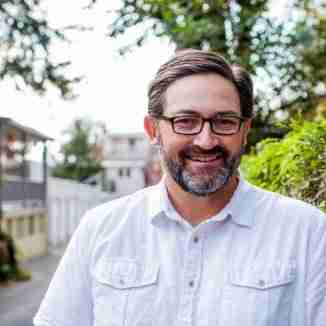
The Evolving Hunt for an HIV Cure, and How Gene Therapy is Paving the Way
On June 5, 1981, an article published by the Centers for Disease Control (CDC) noted several cases of a rare lung infection called Pneumocystis carinii pneumonia (PCP) in a handful of gay men living in Los Angeles. The CDC paper that noted the PCP cases also indicated these men had other infections, which suggested that their immune systems were not functioning properly.
Around the same time, a New York dermatologist contacted the CDC about a cluster of Kaposi’s Sarcoma (KS) cases he found in young, previously healthly gay men. KS is a rare cancer generally found in the elderly and generally impacts people with already weakened immune systems.
These were the first known citations of a disease that has devastated the world for decades: Acute Immunodeficiency Syndrome (AIDS) that is caused by the Human Immunodeficiency Virus (HIV).
David Ho and his fellow researchers at the Aaron Diamond AIDS Research Center have traced the very first known AIDS patient to a man living in the Democratic Republic of Congo in 1959. Studies have since proven that HIV and AIDS likely arrived in the U.S. in the early 1970s. Once HIV/AIDS arrived in major metropolitan areas like New York and Los Angeles, the case count exploded and the HIV/AIDS epidemic began in the U.S., with its most devastating impacts among gay men and the needle-using drug population.
By 1982 there were approximately 500 documented HIV/AIDS cases in 23 U.S. states and similar outbreaks were being reported globally. That year 853 people died of AIDS in the U.S. By 1984, the number of U.S. deaths quadrupled to over 8,000 and by 1995 that number reached over 48,000 lost lives. (Source: https://www.factlv.org/timeline.htm).
According to the World Health Organization (WHO), over 79M people have been infected with HIV and over 36M people have died from AIDS since the epidemic began. In 2020, over 37M people were living with HIV and some 680,000 died of AIDS-related illnesses.
In the early days of the HIV/AIDS epidemic so little was known and scientists and across the globe were racing to understand the disease and find ways to treat it. For those that lived through the devastation and horror of the HIV/AIDS epidemic of the early 1980s, effective treatment, let alone a cure for HIV, seemed unimaginable.
Out of the early darkness and despair of the HIV/AIDS crisis emerged scientific discoveries—like the first HIV test and the first FDA approved HIV drug calledazidothymidine (AZT)— that would save millions of lives and lay the foundation for potential new therapies that could one day possibly cure the disease.
The Early Race to Understand HIV/AIDS and Save Lives
So little was known about this devastating immune disorder in the early phases of the HIV/AIDS epidemic. In many ways, the more recent, frantic push to understand and find a viable treatment SARS-CoV-2 mirrored the scientific community’s desperate efforts to understand HIV and find a way to save lives in the 1980s.
Early in the HIV/AIDS crisis, the BioHealth Capital Region was the epicenter of HIV/AIDS research, with much of this groundbreaking research occurring within the lab of the now famed NIH researcher, Dr. Robert Gallo. In 1983 and 1984 Gallo and his collaborators co-discovered and confirmed that the virus responsible for the killer disease known as AIDS was human T lymphotropic virus type III (HTLV-III). Gallo and the company went on to develop the first test that identified the virus in humans—the HIV-antibody blood test.
By 1983 the disease had started to spread globally. By 1999, approximately 33M people across the globe were living with HIV and an estimated 14,000,000M people had died from AIDS since the epidemic began.
The 1995 approval of Highly Active Antiretroviral Treatment (HAART), which was the result of the remarkable, collaborative efforts of the scientific community, led to the reduction of AIDS-related deaths and hospitalizations by 60-80%. A short time later what was once a three-drug cocktail had been transformed into a pill taken once daily.
RELATED: American Gene Technologies Launches “The Cure Chronicles” HIV Video Series
As of June 2020, 28.2M people are estimated to be receiving antiretroviral treatment globally. While one of the greatest achievements in medical history, HAART and subsequent treatment forms do not cure HIV. Within just weeks of stopping treatment, the virus returns to full strength and chronic inflammation caused by suppressed HIV can lead to adverse health effects over the long term. Current HIV treatments control it but do not cure it; in fact, research shows that those being treated for HIV are more susceptible to other diseases and health risks at an earlier age.
Several companies are developing potential HIV cures to free patients from the burden of antiretroviral treatment forever. American Gene Technologies (AGT), located in Rockville, Maryland is one such company; its cell and gene therapy, AGT103-T, is a potential functional HIV cure currently in a Phase 1 clinical trial that has yielded positive results to date.
The groundbreaking work being done by gene therapy organizations like AGT and others would not have been possible without the groundbreaking HIV/AIDS work done by Gallo and other scientific researchers early on in the epidemic.
The Search for an HIV Cure
Gallo and other HIV/AIDS researchers in the 1980s and 1990s built the scientific foundation for the potential cure for HIV. Today, HIV gene therapies currently in development and CRISPR gene editing technology represent the next great leap forward in the disease’s treatment.
Gene therapy is at the forefront of scientific advancements in the treatment and potential treatment of a wide array of indications, including cancer, genetic disorders and infectious diseases.
Put simply, gene therapy is the manipulation of a patient’s genes to treat or even cure a disease. Gene therapies have several different approaches, including replacing defective genes with healthy genes, inactivating malfunctioning genes or introducing a modified gene to fight off disease. Plasma DNA, viral vectors, bacterial vectors, gene editing and patient-derived therapies are all being explored as gene therapy methods. (Source: FDA).
Today, a host of life sciences companies are utilizing gene therapy as a tool to find a cure for HIV. When discussing an HIV cure, there are two different possible targets: a “functional cure” where HIV is not eradicated but rather totally controlled without further ART treatment and a “sterilizing cure” that eliminates HIV completely from the body.
The use of viral vectors and CRISPR-Cas9 gene editing technology have emerged as promising tools that could yield a cure for HIV in the near future.
Viral Vectors
The use of viral vectors has shown tremendous promise for the development of a possible HIV cure.
Viral vectors are commonly used in gene therapy. There are several viral vector types, including retroviruses, adenoviruses, adeno-associated viruses, herpes simplex viruses and lentiviruses. Essentially, a genetically modified virus is used as a vehicle to deliver gene therapy into a patient’s cells. The components of the virus that cause illness are removed but its ability to attach and penetrate human cells is preserved, creating an efficient and targeted means to deliver gene therapy.
RELATED: Mission, Purpose, and Reducing Human Suffering Propel American Gene Technologies Forward
There are a host of biotech companies exploring myriad gene therapy and editing approaches to eradicate or functionally cure HIV.
For example, Rockville, Maryland’s American Gene Technologies, which has an ongoing Phase 1 trial for a functional HIV cure, utilizes lentiviral vectors as its primary gene therapy delivery system. AGT’s potential functional cure—AGT103-T—is a cell therapy that infuses HIV patients with their own supercharged CD4 T cells. CD4 T cells, or helper T cells, are critical to fighting off infection; however, HIV targets and destroys helper T cells to a level where they can no longer combat the HIV infection. AGT103-T CD4 T cells, however, are both trained to detect HIV-specific proteins as well as genetically modified using lentiviral vectors to prevent HIV from entering and multiplying, meaning that they are resistant to being infected by the very virus they are seeking to destroy.
Check out the video below to learn more about how AGT103-T works:
AGT is attempting to develop a single infusion of enriched, HIV-specific CD4 T cells that will resist HIV infection/destruction, allowing the body to fight the infection and create durable immunity. AGT103-T is a potential “functional” cure because it doesn’t eradicate HIV entirely from the body but instead keeps it dormant.
The single dose nature of AGT103-T is important to note because HIV patients on ART therapy have to remain on this drug cocktail for life because as soon as they stop the latent HIV reservoir will return. Treatments like AGT103-T have the promise to offer a single dose therapy that “cures” HIV and potentially removes the burden of lifetime ART from patients.
RELATED: With a Chance to Cure HIV, American Gene Technologies Offers Employees a Front Seat to History
The use of viral vectors to functionally cure HIV has great promise but no product has been approved for use by the FDA. That said, there is tremendous optimism that a functional cure for HIV could be a reality in the near future.
CRISPR-Cas9
CRISPR-Cas9 is a practical, powerful and versatile tool that lab researchers started to embrace about a decade ago to edit genomes and alter DNA. The technology allows genetic material to be added, “knocked out” (removed) or altered, ideally at particular targets in the genome and in a pre-designed way to meet researchers’ needs. CRISPR is one of the newest gene-editing tools that has risen to prominence and generated tremendous excitement across the last three years. It is an incredibly promising tool that until the last few years has been primarily limited to laboratory use and animal models due to unknowns regarding its safety and efficacy for humans. In 2019 however, the University of Pennsylvania launched the first US clinical trial using CRISPR for cancer treatment, and at least a half dozen additional trials are being planned across the US, Canada, and Europe.
CRISPR has also shown great promise as an R&D tool for HIV.
CRISPR has the ability to add or alter genetic material. It also can remove or “knock out” genetic material. In this way, CRISPR-based HIV research is exploring both “functional” and “sterilizing” HIV cures. While finding any cure is critical, CRISPR might have the most promise and best chance to completely eradicate HIV from the body, much like what was experienced by the “Berlin” and “London” patients who were cured (sterilized cure) of HIV following allogeneic hematopoietic stem cell transplantation.
In 2019, Chinese scientists used the “Berlin” patient’s case as inspiration to treat an HIV patient with CRISPR gene-editing technology for the first time. The scientists genetically engineered stem cells to replicate a rare form of natural HIV immunity; they infused these stem cells into a patient with HIV and blood cancer. The cells survived for about 19 months, which was a remarkable finding, but they were not effective in reducing the HIV levels in his blood.
More recently, CRISPR has enabled advancements in understanding how HIV infects the human body. Researchers at Northwestern University’s Center for Pathogen Genomics and Microbial Evolution used CRISPR gene-editing technology to map “…86 genes that may play a role in the way HIV replicates and causes disease, including over 40 that have never been looked at in the context of HIV infection.” (Source: Northwestern Now).
And in September 2021, Excision BioTherapeutics announced it had received Investigational New Drug (IND) approval from the FDA to commence a clinical trial for its CRISPR therapy EBT-101. This marked the first IND approval for a CRISPR-based HIV therapy granted by the FDA.
CRISPR-based HIV therapy is in its very earliest stages, but Northwestern University’s discoveries, the 2019 Chinese dosing results and the recent FDA IND approval are terrific milestones along the road to an HIV cure.
What’s Next
Momentum for an HIV cure is building but FDA approval of a “functional” or “sterilized” cure is likely several years away, at least. Companies like AGT, Excision BioTherapeutics, and others, as well as researchers using CRISPR to better understand how HIV operates, are providing real hope to HIV patients, their families, and advocacy groups across the globe.
Beyond an HIV cure approval from the FDA, other challenges remain like affordability and access, particularly in developing countries with poorer HIV populations and logistical obstacles to drug delivery.
What is clear is that an HIV cure is more possible now than at any point in HIV’s terrible and devastating history thanks to the early work done by HIV pioneers and the advancements in gene therapy that have revolutionized medicine.
- About the Author
- Latest Posts
Steve brings nearly twenty years of experience in marketing and content creation to the WorkForce Genetics team. He loves writing engaging content and working with partners, companies, and individuals to share their unique stories and showcase their work. Steve holds a BA in English from Providence College and an MA in American Literature from Montclair State University. He lives in Frederick, Maryland with his wife, two sons, and the family dog.






